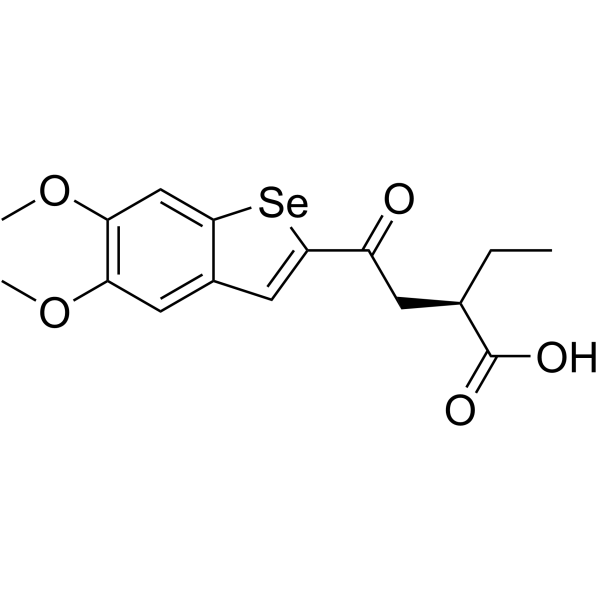| Description: |
BSP16 is a potent, orally active stimulator of interferon genes (STING) agonist. BSP16 can selectively stimulate the STING pathway. BSP16 can be used for the research of cancer. |
| Target: |
IC50 for STING: 9.24 μM (ISG-THP1 cells); 5.71 μM (ISGRAW264.7 cells)[1] |
| In Vivo: |
BSP16 (po, 50 mg/kg; iv, 5 mg/kg) has well lerated and excellent pharmacokinetic profile[1]. BSP16 (oral, 15 and 30 mg/kg, q3d; oral, 20 mg/kg, q5d) induces tumor regression and durable antitumor immunity[1]. Animal Model: MC38 (colon carcinoma) syngeneic tumor model[1] Dosage: 15, 30 mg/kg Administration: oral, q3d Result: Exhibited tolerated and excellent antitumor efficacy, experienced complete tumor regression (CR) after day 21. Resulted in robust induction of IFNB and IL6 (30 mg/kg). Animal Model: CT26 (colon carcinoma) tumor model[1] Dosage: 20 mg/kg Administration: oral, q5d Result: Exhibited tolerated and induced tumor regression in all treated mice within 30 days. Led to a substantial elevation of IFNB in the plasma in CT26 bearing mice. Animal Model: Rats[1] Dosage: 5 mg/kg, 50 mg/kg Administration: oral and i.v Result: compd. adm. Cmax(μg/mL) AUG0-∞(h*μg/mL) t1/2(h) Vss(L/kg) CL(L/h/kg) F(%) BSP16 po(50 mg/kg) 58.2 315.9 1.60 0.38 0.16 107 iv(5 mg/kg) 29.4 1.04 0.26 0.17 |
| In Vitro: |
BSP16 (0.1-100 μM) can selectively stimulate the STING pathway in ISG-THP1 and ISGRAW264.7 cells with EC50 values of 9.24 and 5.71 μM, respectively[1]. BSP16 (10, 25, 50 μM; 1, 3, 6 h) strongly activates STING signaling in human and mouse cells and binds STING as a homodimer[1]. BSP16 exhibits a promising absorption, distribution, metabolism, excretion and toxicity[1]. RT-PCR[1] Cell Line: ISG-THP1 cells Concentration: 10, 25, 50 μM Incubation Time: 1, 3, 6 h Result: Robustly induced mRNA expression of target genes IFNβ, CXCL10, and IL6 in response to STING activation, in a time and concentration-dependent manner in ISGTHP1 cells. Western Blot Analysis[1] Cell Line: ISG-THP1 cells Concentration: 10, 25, 50 μM Incubation Time: 1, 3, 6 h Result: Rapidly increased the phosphorylation of TBK1 and IRF3 in a concentration-dependent manner. |
| References: |
[1]. Xi Feng, et al. Discovery of Selenium-Containing STING Agonists as Orally Available Antitumor Agents. J Med Chem. 2022 Sep 7. |






















